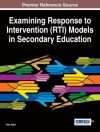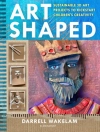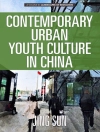This book offers Posthumanist readings of animal-centric literary and cultural texts. The contributors put the precepts and premises of humanism into question by seriously considering the animal presence in texts. The essays collected here focus primarily on literary and cultural texts from varied theoretically informed interdisciplinary perspectives advanced by critical approaches such as Critical Animal Studies and Posthumanism. Contributors select texts that cut across geographical and period boundaries and demonstrate how practices of close reading give rise to new ways of thinking about animals. By implicating the “animal turn” in the field of literary and cultural studies, this book urges us to problematize the separation of the human from other animals and rethink the hierarchical order of beings through close readings of select texts. It offers fresh perspectives on Posthumanist theory, inviting readers to revisit those criteria that created species’ difference from the early ages of human civilization. This book constitutes a rich and thorough scholarly resource on the politics of representation of animals in literature and culture. The essays in this book are empirically and theoretically informed and explore a range of dynamic, captivating, and highly relevant topics.
Comprising over 15 chapters by a team of international contributors, this book is divided into four parts:
Contestation over Species Hierarchy and Categorization
Animal (Re)constructions
Interspecies Relationalities
Intersectionality- Animal and Gender
This book will be essential reading for students and researchers of Critical Animal Studies and Environmental Studies.
Table of Content
1. Zoohistoricism: Literary animals as codes in history and culture.- 2. Can natural theology rethink its relationship with non-human animals?.- 3. Jacques Derrida and the Autobiographical (Non-Human) Animal: An Analysis of (False) Animal Autobiographies.- 4. Reassessing Predatory Animals in Literary Journalism: A Look at John Vaillant’s The Tiger and Nate Blakeslee’s The Wolf.- 5.The Bird and Eye: Kinship with Birds as Proto-Ecofeminist Discourse of Liberation in George Meredith’s The Egoist.- 6. Deconstructing the Human-Animal Hierarchy at the End of the World: Readings in Literary Representation of Apocalypse.- 7. The Snake Has A Face: Levinas, Mondo, and the Suffering Non-Human Animal.- 8. Bowers of Persuasion: Toward a Posthuman Visual Rhetoric.
About the author
Krishanu Maiti, Ph.D., teaches English literature and language at Panskura Banamali College (Autonomous), W.B., India. He wrote his doctoral thesis on representation of animals in D. H. Lawrence and Ted Hughes. His areas of interest include Animal Studies, Posthumanism and Environmental Humanities. He co-edited a volume titled Global Perspectives on Eco-Aesthetics and Eco-Ethics: A Green Critique (2019), published by Rowman & Littlefield, USA. His co-authoredessay on ‘Buddhism and Veganism’ appears in The Routledge Handbook of Vegan Studies.












